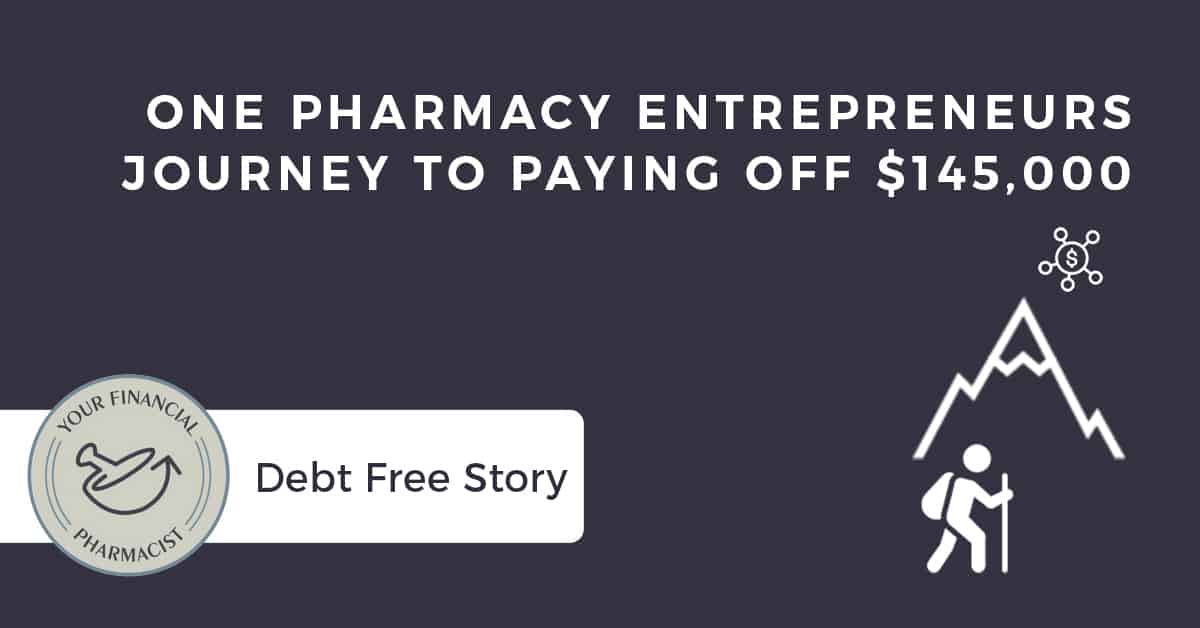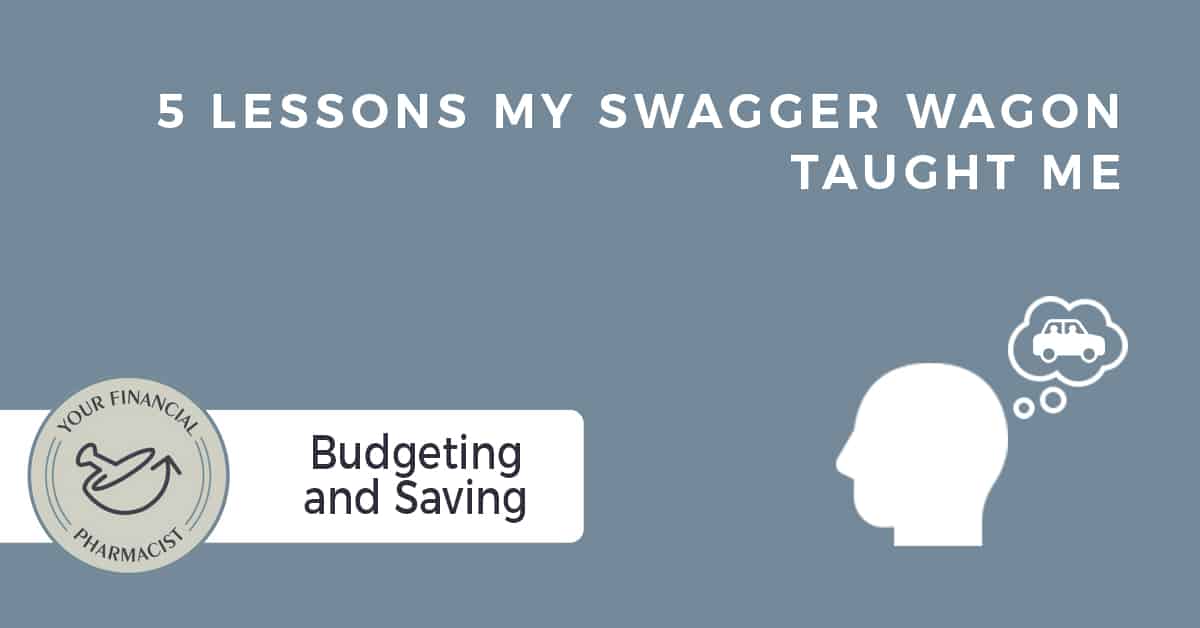The following post was written by Eric Christianson, PharmD, BCPS, CGP. Eric is the creator of Med Ed 101, a popular educational web site that focuses on helping students and pharmacists prepare for licensure and certification exams. You can subscribe to his blog at https://www.meded101.com/blog/. You can also follow him on Twitter (@MedEd101) where he provides updates that will help you stay current in your practice. He is the author of Pharmacotherapy: Improving Medical Education Through Clinical Pharmacy Pearls, Case Studies and Common Sense. I hope you find his story about becoming debt free and lessons learned as inspirational as I did!
Pharmacy student loans have felt like a black cloud in my life, but I try to look at the good in every situation. I learned a lot about what two people (my wife and I) working together could accomplish.
I graduated in 2009 from pharmacy school with $145,000 in student loan debt. It took my wife and I about 7 years to pay off those loans. There were a lot of ups and downs throughout the process, but we had a goal, made sacrifices that a lot of people don’t, and have found out what we can now do with an extra $2,000 – $3,000 per month!
The Downs
Throughout a multi year process of paying off debt, you run into all sorts of unpredictable life events. Being married, having a couple of wonderful children, and owning a home really impacts the finances. A couple of major things that happened to us were that we added an egress window to a basement room so we had enough room in our house for a second child. We also redid shingles on our home and needed to buy a used (new to us) car. Other less expensive things that happened were appliances that stopped working. We had to replace a washer, dryer, and stove over a five-year period. We may have been out of debt quicker without these expenses that probably cost us $20,000 – $25,000 total.
The Ups
I found joy in the little targets. Every $10,000 dollars paid was exciting. Breaking the $100,000, $50,000, and $10,000 barriers were really exciting and made me feel like progress was being made. Shorter-term goals were important for us to keep going and helped us look back and realize how far we had come. We had plenty of personal ups including the birth of our two children, several family weddings, and a couple of long weekend trips to warmer climates during the winter.
Lessons Learned Along the Way
# 1 – Define a dream versus a goal. If your plan is waiting for a distant relative to die and leave you a million in the bank, you will be disappointed and have wasted a lot of time and energy thinking about it. Trust me, thoughts like this have crossed my mind. Dreams mean nothing without action behind them. Start with the end in mind. Setting a long-term goal with short-term targets along the way helped me get excited and focused on a way forward. Write out a plan and take control.
# 2 – Discipline. No, we are not going out to eat tonight was something I had to tell myself and negotiate with my family.
# 3 – Revenue, Taxes and Expenses. Our family Pre-Tax income varied from the upper 90’s/year to the 140K range throughout this 7 year period of paying off debt. Expenses went up with children, and don’t forget about taxes!
# 4 – Sacrifice. To those who say you can’t live without a smart phone, you are wrong. Call me what you will, but I just purchased my first smart phone a few months ago. There were certainly times of discomfort and near embarrassment because of this fact, but it saved our family in the neighborhood of $100-200/mo. We also lived in a modest home and drove vehicles 8-10+ years old. I picked up extra hours as well as started a side business.
# 5 – What really matters? As I have gained more life experience, I have accumulated a greater appreciation for what really matters. If you have ever had a sick child, friend, or other family members, you understand how much you would give up for health. While my financial health felt pretty ill for a while, my family has overall been blessed with incredible physical health.
# 6 – Control. Your car breaks down, the washer quits, or wallet gets stolen are all things that are out of your control. Do your best to take action and fix the situation. Expect the unexpected and recognize the only thing in life you can control is your actions.
# 7 – Financial Freedom. Freedom is a great word. Money is not everything, but what money can do is provide you more freedom to live a happier, more fulfilling life.
# 8 – Interest sucks. My parents talk about interest rates in the “teens” and I can’t even imagine that. On $100,000 of debt, at a 5% interest rate, you will pay about $417/month in interest alone. Take that same $100,000 at a 10% interest rate and you will pay $833/month in interest alone. I realized how lucky I was to have a 4% interest rate.
Your Financial Pharmacist Comment: What an inspirational story of going from $145,000 in debt to $0 within a 7-year period despite a growing family and significant unexpected expenses. It was clear Eric and his wife had a mindset of controlling expenses while getting creative about bringing in more money by starting a side business. The double whammy of cutting expenses while bringing in more income helped him get out of debt and be on a path to financial freedom!
Join the YFP Community!
Recent Posts
[pt_view id=”f651872qnv”]




